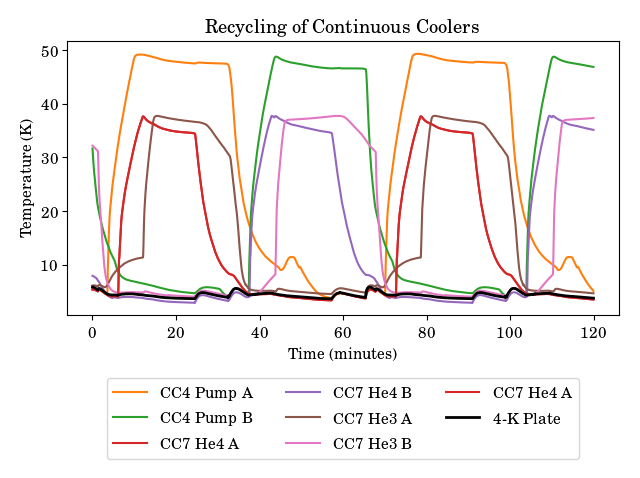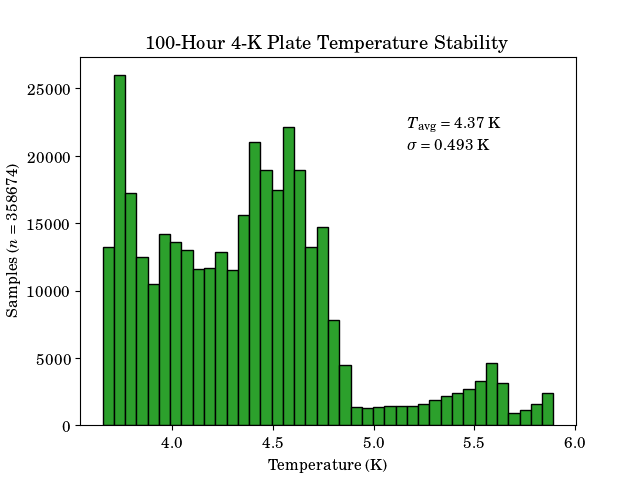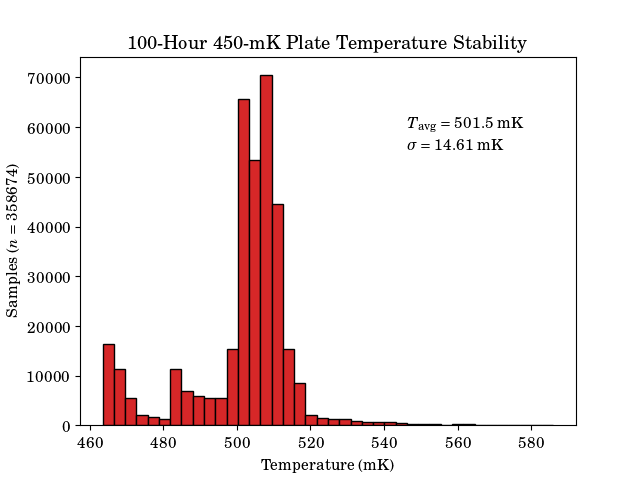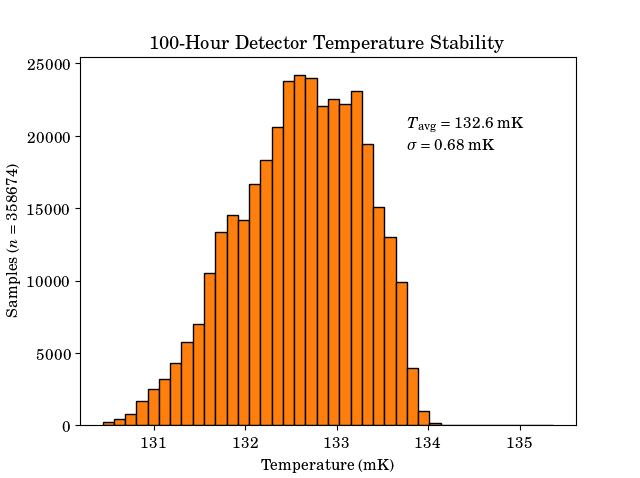Temperature Stability
Cause of Fluctuations

The sorption coolers used to cool the 1-K and 450-mK stages of MUSCAT provide continuous cooling of these stages. To do this the coolers are split in to two subsystems (A & B) which are cycled in anti-phase to each other. Sorption cooling operate by heating a pump containing activated charcoal to release helium gas and then condense this gas in a reservoir. Once the gas is fully condensed the pump is cooled causing the helium to be adsorped cooling the metal walls of the reservoir via evaporation. This operation means that at any given time one subsystem either has its pumps hot or heating while the other is providing cooling. It is this heating which causes fluctuations in temperature in the 4-K plate and those at lower temperatures. The above plot shows this fluctuation over the space of 2 hours which is more than the time taken to cycle both subsystem sequentially.
Magnitude of Fluctuations
To explore the magnitude of these fluctuations we look at 100 hours of continuous temperature data measured (over 350000 measurements per sensor). This 100-hour measurement consists of 89 cycles of each of the two subsystems (178 sequential cycles in total).
The histograms below show the variation in these measurements for three important stages of MUSCAT, the 4-K plate (where RF amplifiers are mounted), the 450-mK stage (which forms the final radiation shield before the detectors), and the detector stage itself.
4-K Stage

The 4-K plate, where the sorption pumps are mounted, is the most effected by temperature variations. During the measurement period the average temperature was 4.37 K with a standard deviation of 493 mK, a relative fluctuation of 11 %.
450-mK Stage

The 450-mK plate, had an average temperature of 501.5 mK with a standard deviation of 14.61 mK, a relative fluctuation of 3 %. These fluctuations are not predominantly due to conduction from the 4-K plate but instead are caused by heat leak from the final reservoir which is having helium condensed in it (not providing cooling). During this stage the reservoir's temperature fluctuates and peaks at over 3 K. It should be mentioned that this stage achieves 450 mK when the detector stage is not being cooled it is this scenario which this stages takes it name from. However, the miniature dilution refrigerator used to cool the detector dissipates 324 μW into the 450-mK stage which heats it to approximately 500 mK.
Detector Stage

The detector plate, had an average temperature of 132.6 mK with a standard deviation of 0.68 mK, a relative fluctuation of 0.5 %.